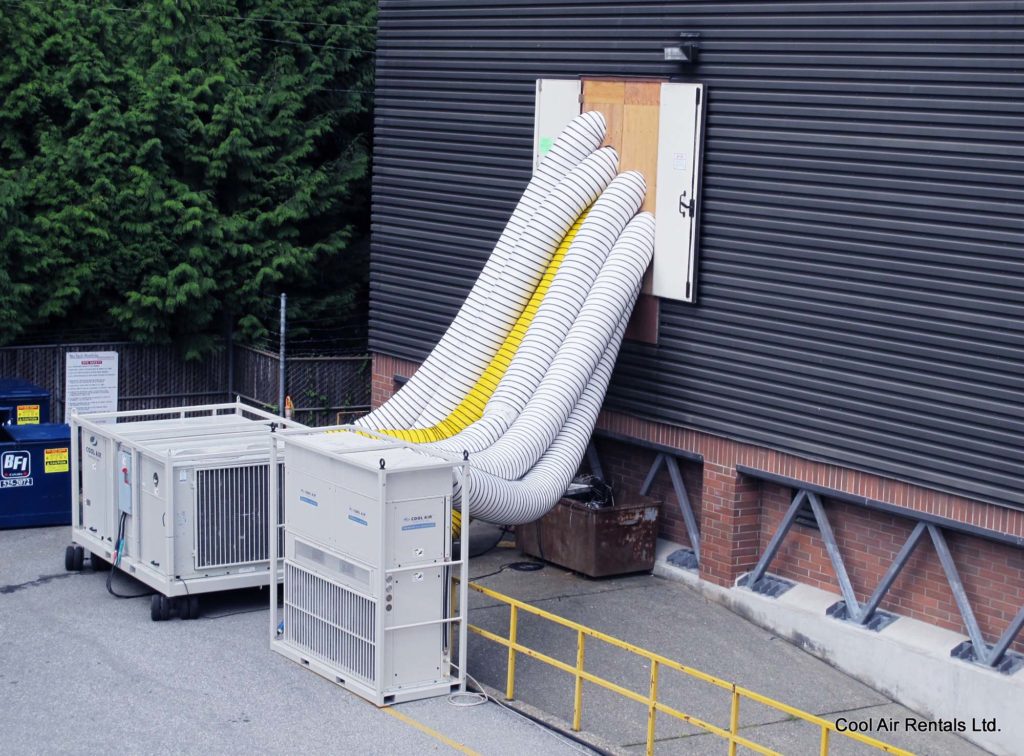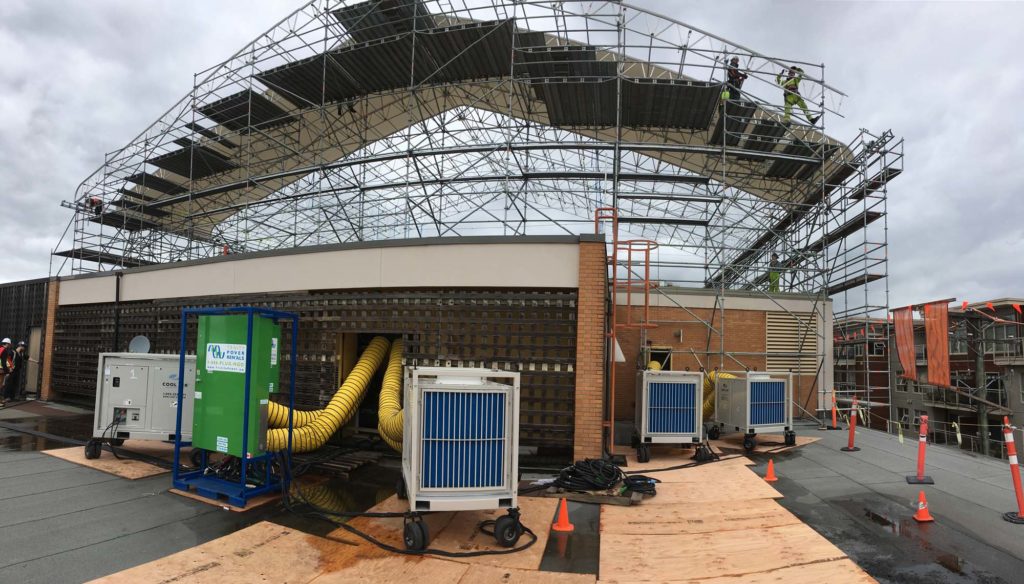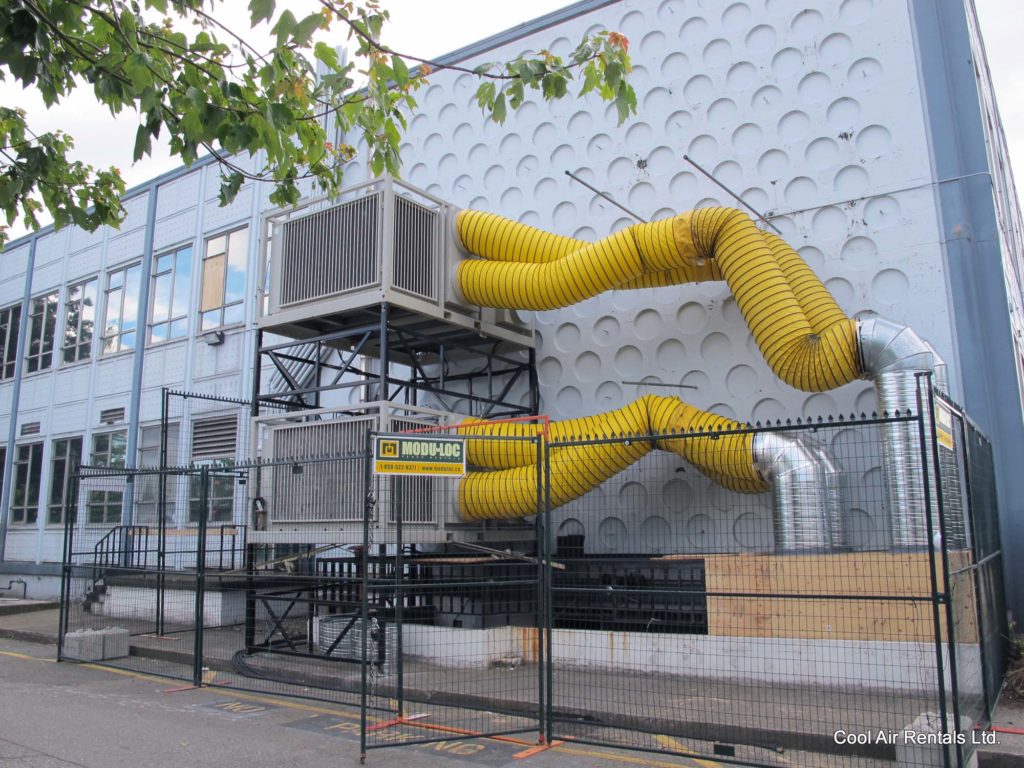This blog re-posted with the permission of our friends over at Trinity Power.
With heat waves setting records in North America and around the world, including a sweltering 37 degrees in Montreal during the Canada Day long weekend, this summer has been a particularly hot one.
For John O’Malley, president of Cool Air Rentals, dealing with the heat is more than a sweaty nuisance – it’s a full-time job. As Canada’s largest supplier of temporary heating and cooling equipment, Cool Air has cooled (and heated) everything from dimmer shacks to electrical vaults to highly sensitive IT and communications equipment.
When it comes to keeping cool, O’Malley is an expert; he spoke with Trinity recently about the most important steps business owners, contractors or site operators can take to keep their heat-sensitive equipment operating at maximum efficiency during summer’s highest highs, and winter’s lowest lows.
Step 1: Hire the Right Contractor
 “Equipment needs to be cooled year-round,” explains O’Malley, “but definitely the dedicated cooling equipment is taxed through the high heat periods of the year.” This is because of the simple principle that the more difficult the operating conditions, the more taxed the equipment will be. And heat is taxing.
“Equipment needs to be cooled year-round,” explains O’Malley, “but definitely the dedicated cooling equipment is taxed through the high heat periods of the year.” This is because of the simple principle that the more difficult the operating conditions, the more taxed the equipment will be. And heat is taxing.
“Equipment breaks down when you need it the most, typically,” O’Malley quips. “You never lose your cooling in the winter, and you never lose your heating in the summer.”
But depending on what you’re cooling, keeping that cooling equipment running can be extremely important. “Staying cool equals staying running,” says O’Malley. “ It means staying operational and staying online. That goes for servers, telecommunication equipment, electrical vaults, and more.”
That’s why it’s especially important during the hottest summer months and the coldest winter ones to ensure that your cooling or heating equipment is at the top of its game. And the best way to do that is by hiring a good contractor.
“Having a good air conditioning contractor who will alert you to any potential problems is crucial,” emphasizes O’Malley. Not only will a good contractor ensure that your heating and cooling system is being maintained on a regular schedule, they will alert you to any potential problems.
“When you need it absolutely the most, if you haven’t done a good job of having your contractor maintain it and let you know that it’s getting on in its life cycle, then the likelihood that that piece of equipment will fail is a lot higher.”
Step 2: Ensure your heating/cooling equipment is the right size for the job
 Just like temporary power equipment, heating and cooling equipment is designed to handle a specific load. And while that equipment might be the right size for the job most of the time, temperature spikes can put a load on that equipment that it wasn’t designed to handle.
Just like temporary power equipment, heating and cooling equipment is designed to handle a specific load. And while that equipment might be the right size for the job most of the time, temperature spikes can put a load on that equipment that it wasn’t designed to handle.
“Make sure your heating or cooling equipment is prepared to handle the hard work that the summer or cold weather in the winter is going to place on that equipment,” advises O’Malley. This is another function that a good contractor can perform. “They’ll make sure that your equipment is sized adequately so that it’s got enough capacity to handle the high highs and the low lows.”
Having equipment that can handle a bigger load than it needs to most of the time is one way to address the load spike caused by extreme temperatures. Another way is to call a company like Cool Air. “Maybe your heating and cooling equipment does a great job nine months of the year, but when you get that really low or high temperature, you need to get temporary heating or cooling,” explains O’Malley.
Step 3: Have a Contingency Plan
Having a heating and cooling contingency plan is a best practice, not just for mitigating the effects of extreme temperatures, but also for avoiding losses that a site could incur if that equipment breaks down for any reason.
O’Malley has worked with companies across many industries to develop comprehensive contingency plans. “We get calls in from health care providers, from infrastructure companies, Telus, Shaw, Rogers, law firms that have server rooms, engineering firms that have server rooms, and they absolutely want to rely on that equipment to be operational 100% of the time.”
 In situations where important equipment requires a strict temperature range to operate, contingency planning is vital, no matter how small the chances of the heating or cooling system failing. “A lot of our contingency planning is done with the mindset that this equipment is critical to operations — if one piece of this network fails, then I have a big problem,” explains O’Malley. “So getting us in to do that contingency planning prior to that event happening is certainly a beneficial exercise.”
In situations where important equipment requires a strict temperature range to operate, contingency planning is vital, no matter how small the chances of the heating or cooling system failing. “A lot of our contingency planning is done with the mindset that this equipment is critical to operations — if one piece of this network fails, then I have a big problem,” explains O’Malley. “So getting us in to do that contingency planning prior to that event happening is certainly a beneficial exercise.”
The best time to call a company like Cool Air to create a contingency plan is, not surprisingly, as soon as possible. “Certainly, the more time that we have, the better,” says O’Malley, who recommends calling before the season begins to plan for extreme temperatures. “But that doesn’t always afford itself because nobody ever expects a dedicated system to break down.”
While Cool Air can respond quickly and effectively to an emergency, calling them in ahead of time and having a plan in place has big benefits. “The ability for us to see the space and map out what the plan is going to be prior to needing it is really beneficial,” explains O’Malley. “That way when we get the call, we know exactly the right piece of equipment; we know the physical attributes – what the access issues are, or what the loading aspect might be, or if there are electrical concerns. If we’ve been there, if we’ve seen it, then our response is much quicker and much more effective.”
For O’Malley, what it all boils down to is respect for the importance of the heating and cooling equipment.
“Much like electricity that we can’t see or hear, cooling and heating is relatively invisible,” he says. “A lot of people don’t respect it until it’s a problem.”
